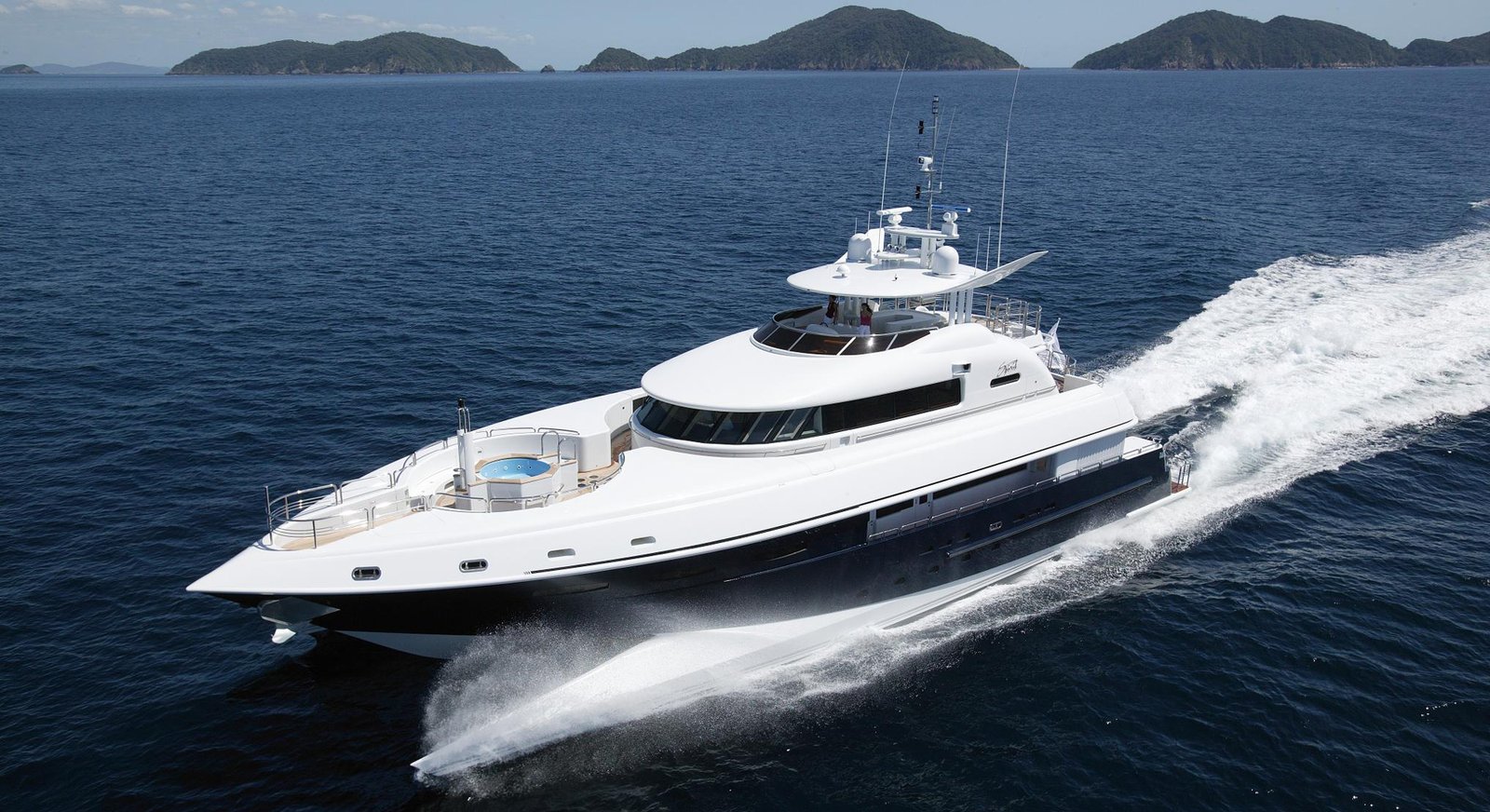A yacht builder that earned accolades for an ultra-efficient megayacht is back in the spotlight. New Zealand Yachts is further in the hands of her founder, and leaning into wave-piercer hulls to capture interest.
New Zealand Yachts got its start in 2001 in Whangarei, New Zealand. Its first project was a power catamaran, Spirit (above and below), which launched in 2004. With design by Ken Freivokh, this 115-footer (35-meter) accommodated an owner’s party of 10. Power catamarans were rare in the smaller motoryacht market, let alone the superyacht sector. More significantly, Spirit incorporated a wave-piercer hull. Briefly, a wave piercer has an extended, tapered section at the bow, gradually getting wider as it flows back toward the middle of the yacht. It penetrates—essentially, pierces—the water instead of planing like a more traditional hull does. The benefits include a more comfortable ride, helping reduce pitching especially in rougher seas, along with better fuel economy.

The following year, New Zealand Yachts earned the Best Power Yacht (32–43 m) design award from the International Superyacht Society. New Zealand Yachts went on to perform an extensive, yearlong refit of Douce France, then the world’s largest sailing catamaran. The refit took place from 2007 to 2008.
The global financial crisis that followed, though, hit the shipyard, and other New Zealand-based builders, hard. It ceased constructing superyachts and focused on refit, but it wasn’t enough to sustain it. The company closed its doors by 2010.

Now, however, New Zealand Yachts’ founder, Allen Jones (above), has revived the brand in Auckland. (He had departed the company prior to its financial issues.) Each project will be entirely custom, yet still fitted with a wave-piercer catamaran hull. Jones is a strong believer in the design. “Spirit proved that design and innovation could co-exist with comfort and beauty,” he says. “This next evolution continues that legacy—delivering space, efficiency, and performance in harmony with the sea. Our goal has always been to craft yachts that feel alive in the water, not just on it.”
Specifically, each New Zealand Yachts project features what the builder calls Wavepiercer Transition-Tubes hulls. According to the shipyard, they leverage the same benefits that Spirit offered. Those further included better speed and a small wake. Buyers can choose between MTU and Caterpillar engines, additionally with pod drives. Pods have earned renown for performance and keeping draft down.

Since the projects are catamarans, alfresco areas and the interior provide ample ways to emphasize the sense of spaciousness. For instance, guest staterooms can sit on the main deck—full beam as well. Watertoys and tenders can stow in the hulls, or between them. Of course, charter-friendly features like gyms and pools are possible, as are configurations that protect privacy.
Jones and other shipyard representatives are attending this week’s Fort Lauderdale International Boat Show and available for meetings.
New Zealand Yachts newzealandyachts.com
